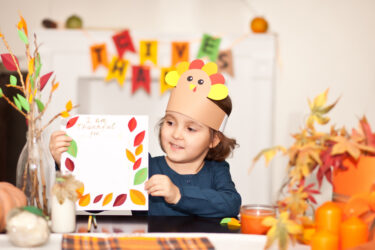When the going gets tough, what do you do? Yell and scream? Throw up your hands and stomp away? Before you give up, try a little bit of something called “Smart Discipline.”
 Somewhere between an old peanut butter sandwich mashed within your living room sofa cushions and the pile of dirty clothes heaped high in your laundry room is the romantic idea of the all-American family you cling to in the depths of your being. Back when you first decided to have children you believed it would be wonderful … THEY would be wonderful. And so they are. It’s just it’s not what you thought it would be … You didn’t envision the squabbling or misbehaviors that often leave you feeling helpless. You didn’t think that your children would sometimes make you feel like throwing in the proverbial towel.
Somewhere between an old peanut butter sandwich mashed within your living room sofa cushions and the pile of dirty clothes heaped high in your laundry room is the romantic idea of the all-American family you cling to in the depths of your being. Back when you first decided to have children you believed it would be wonderful … THEY would be wonderful. And so they are. It’s just it’s not what you thought it would be … You didn’t envision the squabbling or misbehaviors that often leave you feeling helpless. You didn’t think that your children would sometimes make you feel like throwing in the proverbial towel.
Raising children is loaded with great joy, but also tricky disappointments. It’s an ongoing roller coaster of yeses and no’s and it can leave even the most confident parent shaken and questioning their better judgment. In fact, so much emotional investment transpires between parents and children, it’s a wonder that parenting isn’t required study in higher education.
No matter who you are, how many degrees you have or amounts of cash, disciplining typical children is a seriously challenging business. Disciplining typical kids is difficult. Take a busy family with great expectations for everyone’s happiness and it’s time to hone your parenting chops.
Wake Up Call
It’s early on a weekday morning and the kids have to be out the door by 7:15. But your 7-year-old is dragging around the kitchen like he’s apt to do, shoeless and with a you-can’t-make-me attitude. Your 11-year-old has failed once again to set his alarm clock and has yet to show his face even though you have called and called from the bottom of the stairs and the kitchen clock seems to be ticking more rapidly. Your 9-year-old is scrambling again to find last night’s homework and meanwhile, there’s you, toiling over the morning lunchbox assembly line with your stress level rising and the calm in your kitchen threatening to snap.
While this is a fairly mild scenario, lots of families have more intense problems to contend with like kids who break curfews and broken trusts. But family therapist Larry Koenig, Ph.D., author of Smart Discipline (Harper Collins; $23.95) has developed a technique for parents whose discipline abilities have veered out of control. Koenig’s system, “Smart Discipline,” incorporates a five-step process that’s relatively easy to implement. It’s all centered around principles that can change undesirable behaviors into good ones and it can work for all ages of children while fostering self-esteem. It can put the peace and management back into your parenting, or instill it for the very first time. It can take a home filled with out-of-control kids and turns it into the one you envisioned long ago. I’m like that frantic mom in the kitchen … and it worked for me.
Smart Discipline
Koenig says five concrete steps can get you and your kids on the right path no matter what age they are. Here’s how it works:
Initially, parents literally identify each one of their children’s misbehaviors by listing them on a piece of paper. For children ages 3 to 8, limit that number to no more than five. For children ages 9 to 16, it can be 10. If your child has ADD or ADHD, no matter their age, start with no more than two. These same age guidelines should apply to every next step that follows. So, a list of behaviors that bother you about your 4-year-old, for instance, might include 1) Interrupts me on the phone; 2) Whines; 3) Won’t pick up toys; 4) Fights with sister; 5) Won’t go to bed on time.
Next, set up household rules for each child based upon the behaviors you want to change. For example, based upon the aforementioned list of unwanted behaviors, the rules might be:
- No interrupting mom when she’s on the phone
- No whining
- Pick up toys when finished playing with them
- No fighting with your sister
- Go to bed on time
Third, make a list of privileges for each child based upon the things the child likes to do, such as:
- Bike riding
- Going to the park
- Watching TV
- Having a friend over
- Going to the movies
Then it’s time to create a daily chart for each child. For a 3- to 8-year-old, the chart should have eight boxes, while the older child’s should have 12. On the daily chart, in the last five boxes of each chart, put the five privileges you’ve identified for your child:
Next, hold a family meeting and provide individual rules and charts to your kids. Explain how the charts work, saying something like, “We are going to keep a list of the rules and your chart right here on the refrigerator so you can see it. If you break a rule, I will tell you that you did so and I’ll put an “X” in the box marked ‘A.'” If you break another rule or the same one again, I’ll put an “X” in the box marked ‘B,'” and so forth.
Once the child gets past the “free” spaces, he begins to lose privileges. The purpose of putting an “X” in each square is so the child can see that he is heading toward negative consequences. Start a new chart each day. You can see where this goes. The beauty is, kids want to come through.
Smart Discipline provides a way to modify undefined behaviors in your kids while allowing bond strengthening since it’s a system that empowers and teaches … which is what discipline is meant to be about; children actually can learn to respect you for disciplining them!
The Smart Discipline road map is for parents who want to enjoy raising their children – isn’t that all of us? You don’t have to have your heart broken by defiant children, and that dream you had before they arrived in the world may yet come true. Children can be a delight to raise and they can and respect and obey you and you can them. That’s a wonderful possibility to work for … for everyone.
Susan Brooke Day is a mom of four children and editor in chief for this publication.




